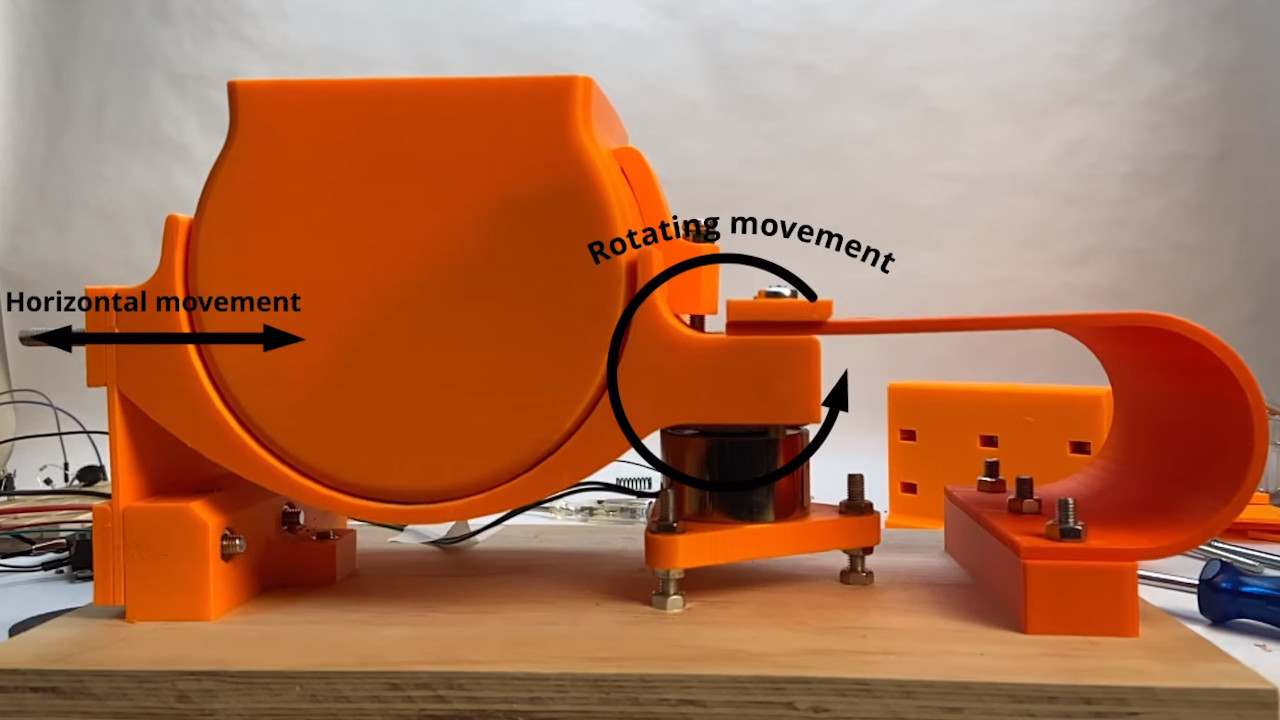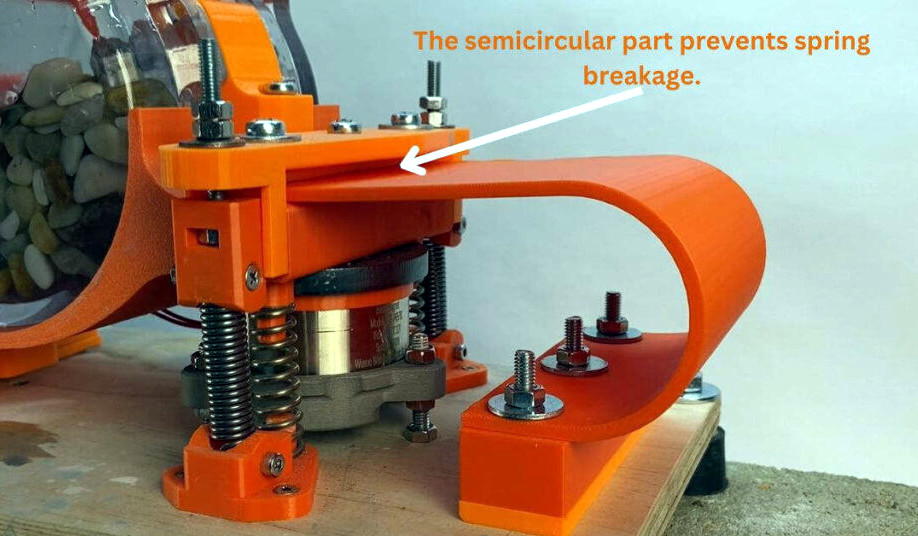Vibratory Rock Tumbler Bounces on Printed Spring [Hackaday]

If you’re reading Hackaday, there’s a good chance you had a rock tumbler in your younger days. Hell, we’d put odds on a few of you having one rumbling away in the background as you read this. They’re relatively simple contraptions, and a common enough DIY project. But even still, this largely 3D printed rock tumbler from [Fraens] is unique enough to stand out.
To make a basic rock tumbler, all you really need to do is rotate a cylindrical chamber and let physics do its thing. Such contraptions are known as, unsurprisingly, rotary rock tumblers. But what [Fraens] has put together here is a vibratory tumbler, which…well, it vibrates. If this was Rockaday we might go farther down this particular rabbit hole and explain the pros and cons of each machine, but the short version is that vibratory tumblers are more mechanically complex and are generally better suited to fine finish work than rotary tumblers which take a brute force approach that tends to round off the rocks.

The end result is a “tossing” motion that gets the rocks inside the printed chamber moving around nicely. The motion can be fine tuned by adjusting the tension on the non-printed springs, which limit the range of the mechanism’s movement.
To drive the electromagnet, [Fraens] is using an Arduino and a L298N H-bridge motor controller. A pair of potentiometers serve as the controls, allowing the user to dial in the duty cycle of the magnet. Interestingly, despite being only rated for 12 V, the electromagnet is being fed off of 24 V for this project. This gives the tumbler a bit more oomph, but at the cost of heating up the magnet. To combat this, the Arduino code implements a 10 minute cool-down period for every hour of runtime. It sounds a little sketchy, but [Fraens] has had this thing cranking for four months now, and the Magic Smoke hasn’t escaped yet.
If you don’t have a 3D printer, or just don’t want to part with the amount of plastic it would take to extrude a machine of this scale, you could always take the easy way out and make a rotary tumbler out of an empty tomato sauce jar and a scrap motor.

![vibratory-rock-tumbler-bounces-on-printed-spring-[hackaday]](https://i0.wp.com/upmytech.com/wp-content/uploads/2024/04/177072-vibratory-rock-tumbler-bounces-on-printed-spring-hackaday.jpg?resize=800%2C445&ssl=1)